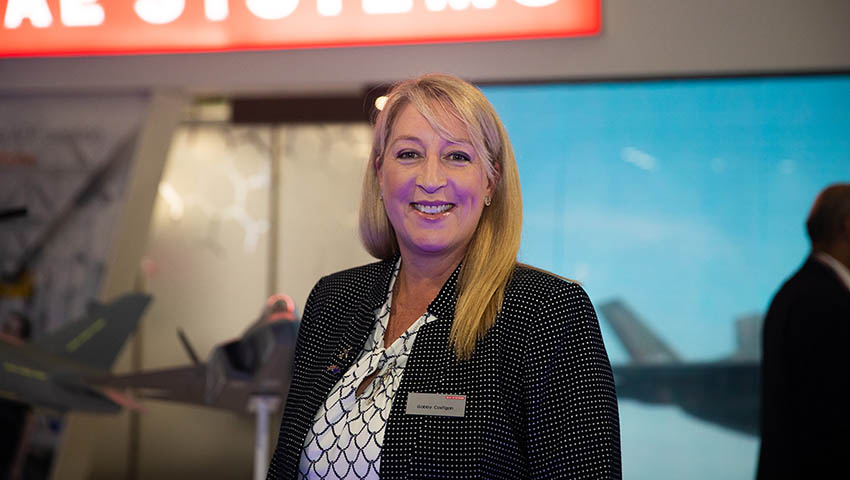Australia is on the verge of a manufacturing revolution. The car industry may have declined, but Australian businesses are still busy designing and building, says BAE Systems Australia chief executive Gabby Costigan.
To continue reading the rest of this article, please log in.
Create free account to get unlimited news articles and more!
Make no mistake, despite widely held perceptions that Australia is no longer a leading manufacturer, advanced manufacturing in this country is strong – and getting stronger.
Today, Australia’s advanced manufacturing is world-leading. And if we can seize the opportunities ahead, then a sophisticated, cutting-edge advanced manufacturing sector will endure for generations.
That must be our goal. A strong manufacturing sector is important for our nation, now and into the future. Right now, Australia is punching well above our weight, exporting high-value defence products into global markets.
Continued growth of advanced manufacturing will support thousands of highly skilled jobs and fuel our global exports.
Australia currently achieves $1.5 to $2.5 billion per year in defence exports.
Defence projects will play an important role in further transforming our advanced manufacturing sector. This is because advanced manufacturing in the defence industry is specialised and high value.
It has to be leading-edge, in order to provide the security and protection our defence force requires. The added benefit for industry is the duration of defence contracts, often extended over decades, and the R&D that’s invested.
Manufacturing today is so much more than making things and shipping them out the door.
Defence has contributed significantly to the transformation of advanced manufacturing.
As the car industry began to decline, many agile manufacturers restructured their businesses and moved from making car parts to producing aircraft components on the biggest manufacturing project in the world – the F-35 Joint Strike Fighter.
While BAE Systems is recognised for its sustainment of aircraft and ships, much of our work is manufacturing, from circuit boards to specialised lenses to titanium parts for the F-35.
We are hugely invested in the F-35 program, having spent $15 million on state-of-the-art manufacturing facilities at our site in SA to make bespoke components for this fifth generation aircraft.
Every F-35 aircraft produced has a variety of components produced by Australian companies. And the door to this program remains open. Companies continue to bid for work, to supply specialist parts for this amazing aircraft and to sustain the Australian fleet of Joint Strike Fighters.
The success of Australian companies in this one project means many are now well positioned to win more specialised, advanced manufacturing work on other defence programs in Australia and overseas.
One of our most successful defence exports is a highly sophisticated decoy used to protect the Royal Australian Navy and allied navies around the globe.
Nulka is Australia’s biggest defence export, having generated more than $1 billion in revenue for our economy. The technologies that underpin Nulka have been developed in Australia.
It’s not just BAE Systems that benefits from the export earnings that Nulka achieves. About half of Australia’s manufacturing workshare on this decoy is distributed to local subcontractors.
By exporting Nulka, we have created further opportunities for Australia; the income earned means that we can invest in research and development, create new jobs, and further expand our Australian supply chain.
And there is so much more on the horizon that will contribute further to growing our reputation as a global leader in advanced manufacturing.
Right now, my company is ramping up the biggest surface shipbuilding project ever undertaken in Australia’s defence history – a $35 billion program to deliver to the Navy nine of the most advanced digitally designed, anti-submarine warfare frigates in the world.
Companies from across the nation will partner with us on the Hunter Class Frigate Program. Our success will depend on these suppliers and the innovation that they will bring to this exciting project, the scale of which is enormous.
To be successful on Hunter, we need the right people, many of whom are currently children.
We will engage with government, universities, colleges, employers and unions to design an early careers program that will provide a continuous pipeline of graduates and apprentices.
It’s estimated that by the end of the Hunter program, 75 per cent of the workforce, including senior executives, will have started as graduates or apprentices
Together with the $50 billion submarine building project, Australia will become an economic powerhouse of modern advanced manufacturing.
And then there’s the impact of the maintenance and upgrading of the ships and submarines during their many decades of service in the Navy with new, specialist equipment and new technology becomes available.
The growth and development of the nation’s defence industry will be important in creating a strong foundation for the future.
My vision is for an industry that is enduring, contributes to Australia’s security and prosperity and is internationally competitive, generating jobs and exports.
For me, that will be the true measure of success.

 Login
Login







